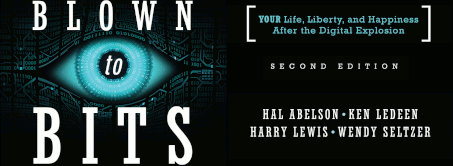Is Regulation of Broadcast Speech an Anachronism?
Friday, May 1st, 2009 by Harry LewisWe make that argument (which we learned from a paper by Larry Lessig and Yochai Benkler) in Chapter 8 of Blown to Bits. The outcome of the Supreme Court case of Fox v. FCC, decided this week, suggests that the line of reasoning we outline has some traction on the Court.
The case, stimulated by Cher’s use of the F-word and Nicole Richie’s use of the S-word, was decided 5-4 in favor of the FCC, which would at first blush make it look like a loss for free-speech libertarians. But the case was decided on narrow administrative grounds; the only question on which the court took a position was whether the FCC had properly promulgated a reasonable regulation (its higher standard prohibiting even fleeting use of expletives at times when children were likely to hear them). The constitutional question of whether that regulation of free speech is in violation of the First Amendment the court let stand.
But the four in the minority seem not to support the restriction of broadcast speech at all. And one of the majority seems inclined in the same direction. That would be Justice Thomas. Although we might have expected him to have the least patience with foul speech on television, he takes the opportunity of writing his own opinion, concurring with the majority in its vote on the administrative question, but making plain that technological changes have shaken the court’s prior reasoning on the constitutional question.
The case has been sent back to the lower court, which will have to take up the constitutional question. Whatever it decides, if the decision is appealed, the Supreme Court may have an opportunity to come down once and for all on the federal government’s right to censor broadcast television.
A few passages from Justice Thomas’s opinion (full opinions here):
even if this Court’s disfavored treatment of broadcasters under the First Amendment could have been justified at the time of Red Lion and Pacifica, dramatic technological advances have eviscerated the factual assumptions underlying those decisions. Broadcast spectrum is significantly less scarce than it was 40 years ago. …
Moreover, traditional broadcast television and radio are no longer the “uniquely pervasive” media forms they once were. For most consumers, traditional broadcast media programming is now bundled with cable or satellite services.… Broadcast and other video programming is also widely available over the Internet. …  And like radio and television broadcasts, Internet access is now often freely available over the airwaves and can be accessed by portable computer, cell phones, and other wireless devices. …
These dramatic changes in factual circumstance swell support a departure from precedent ….
